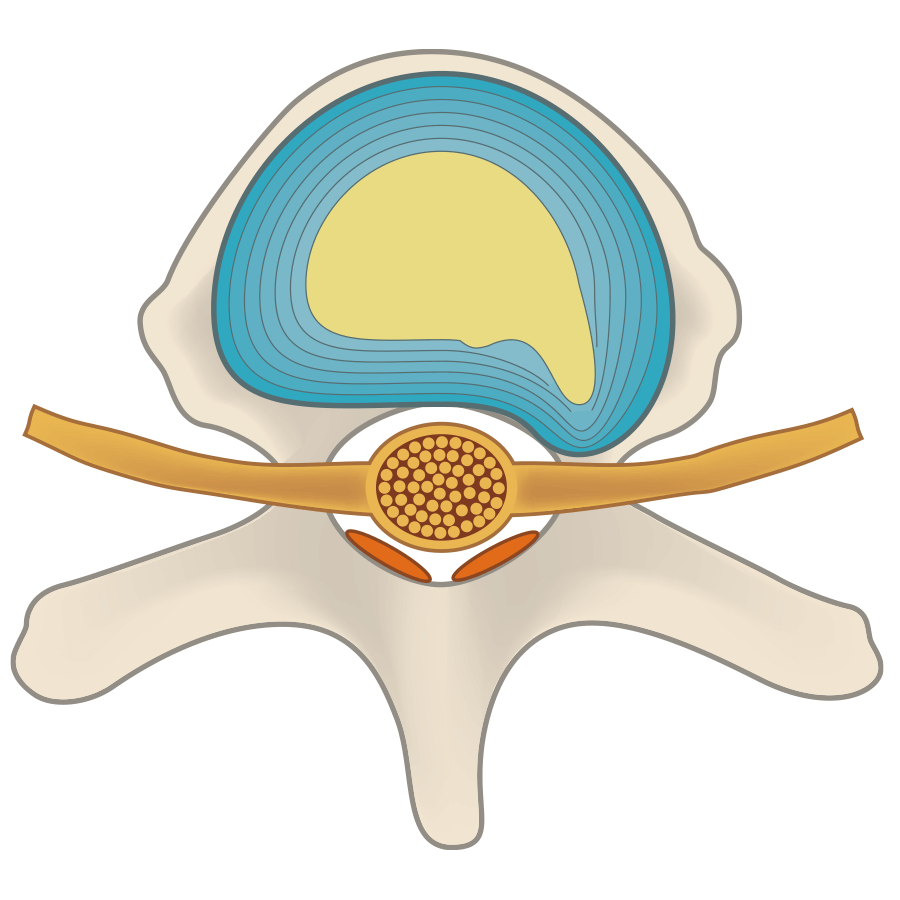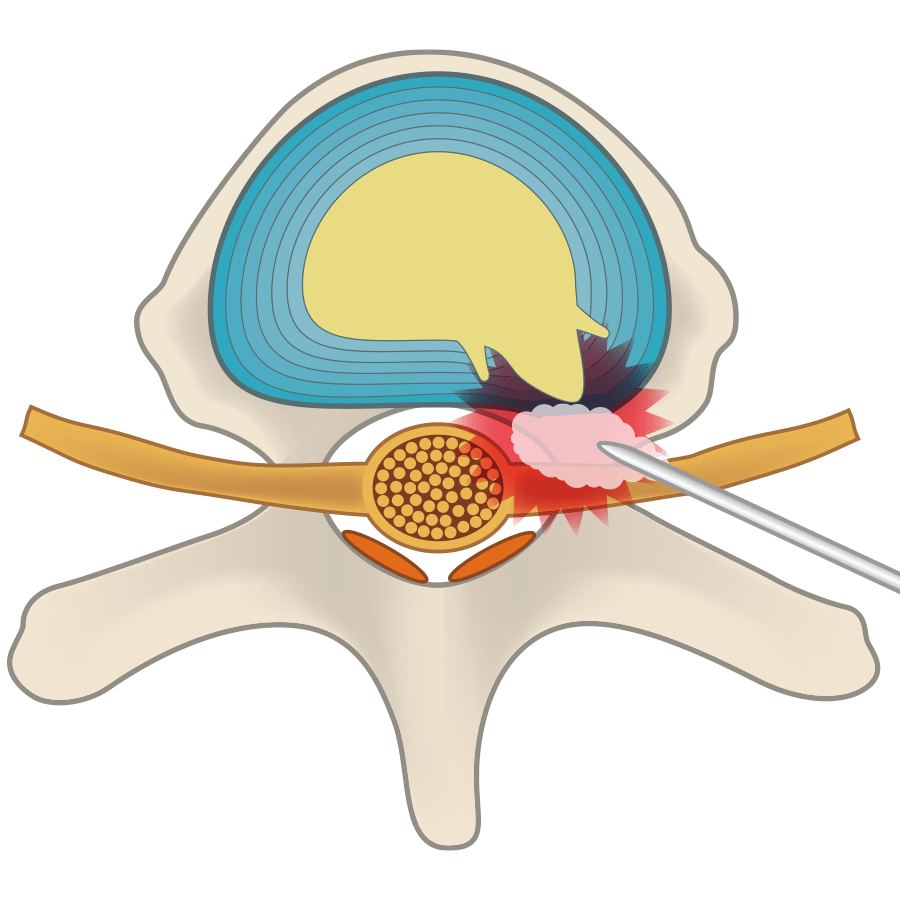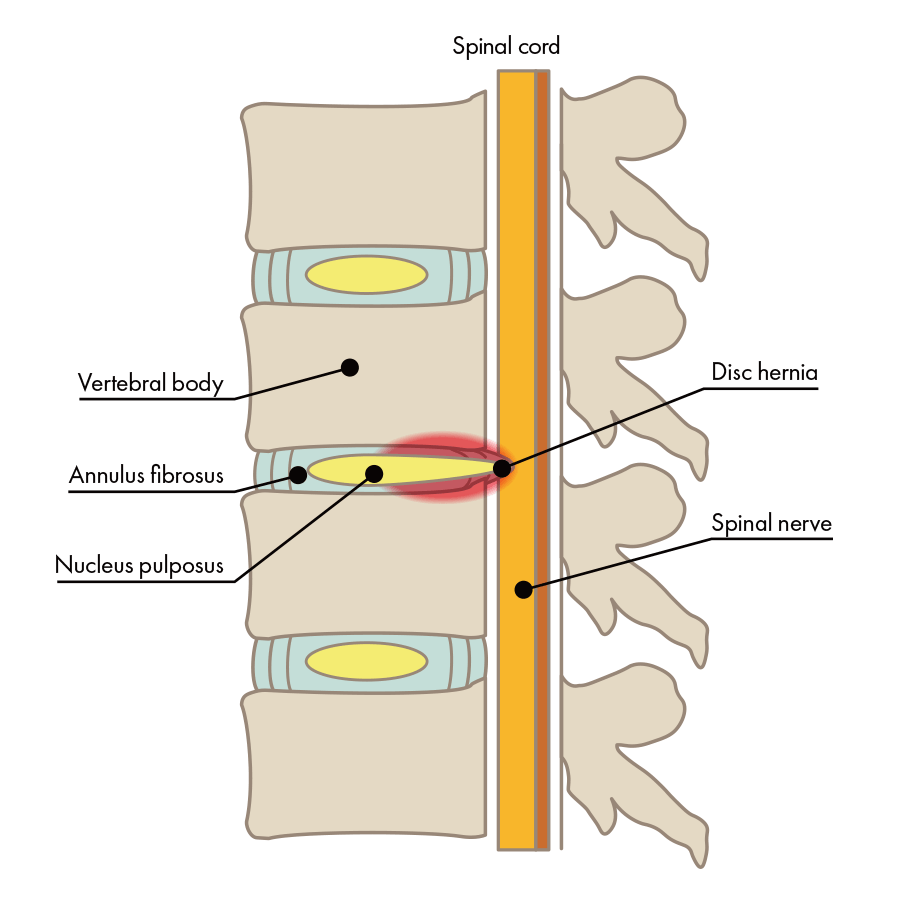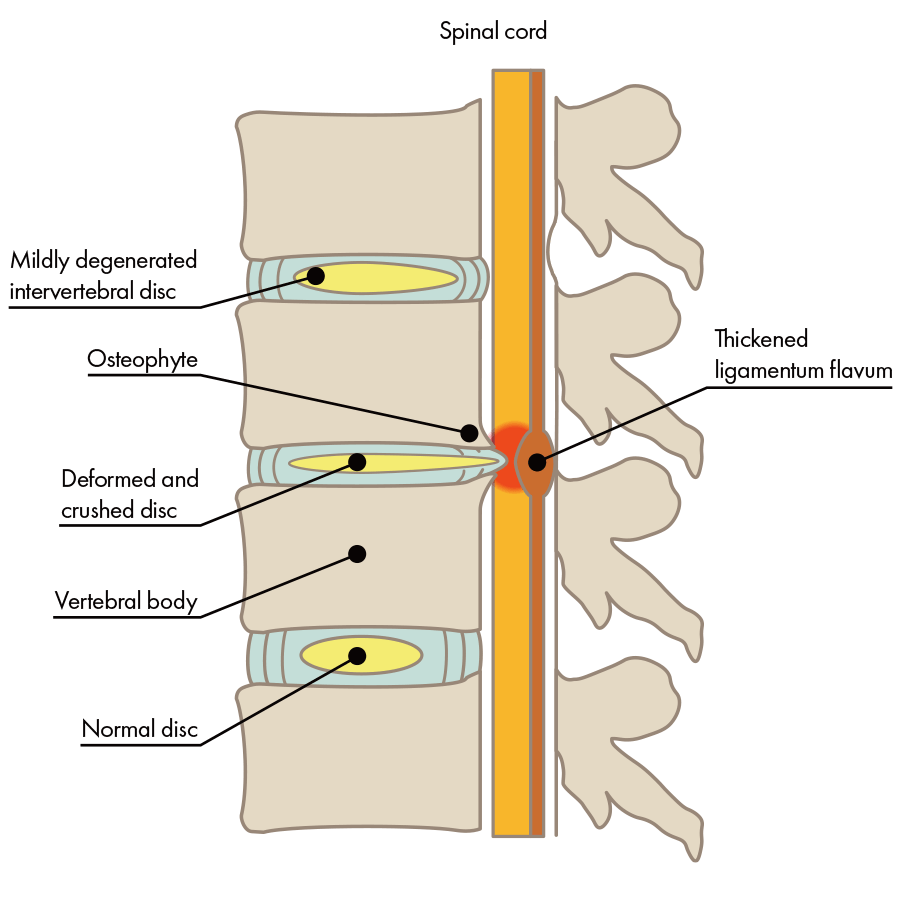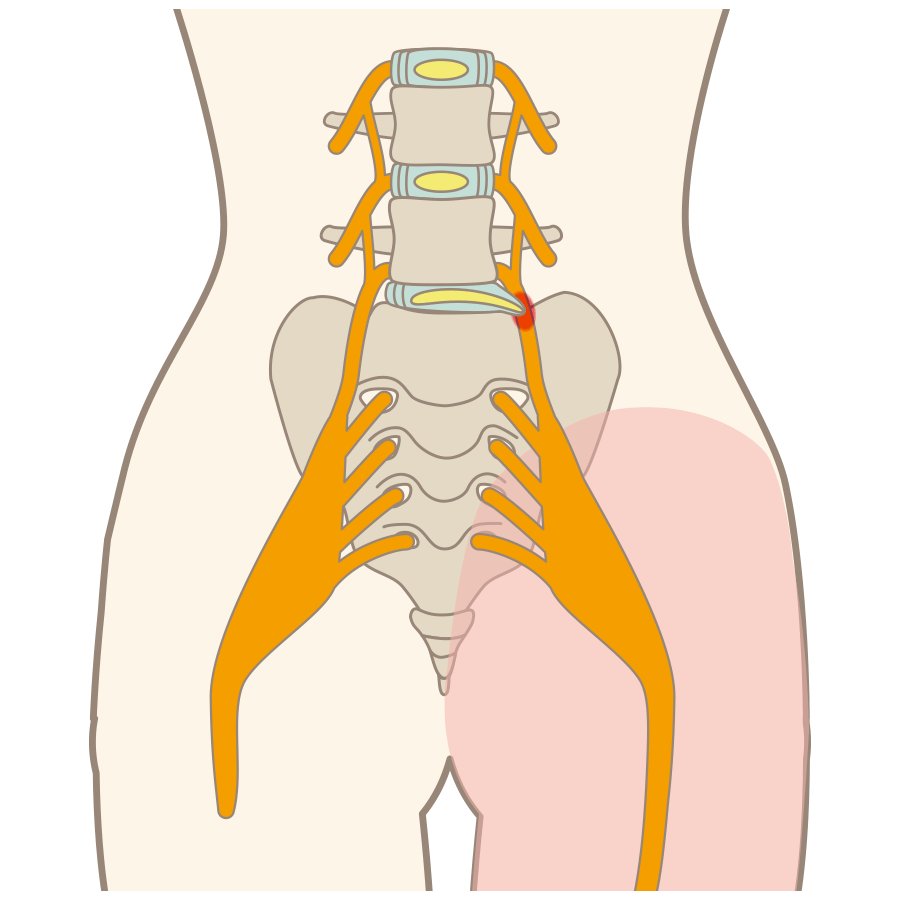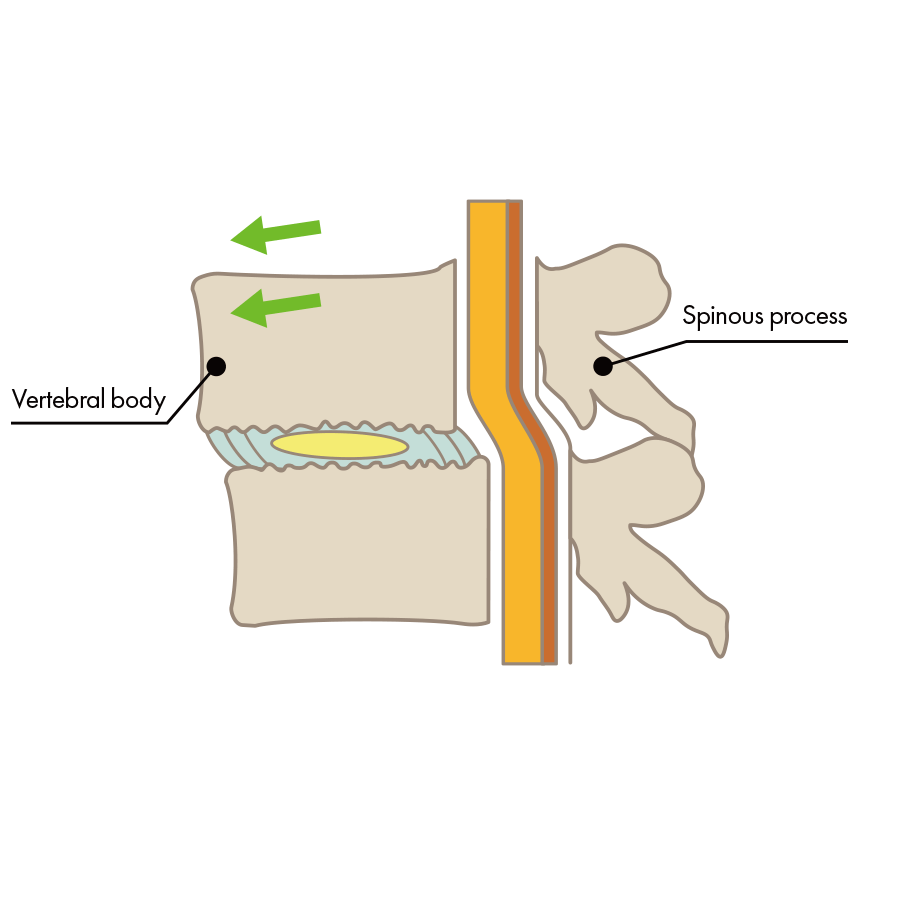The PLDD Method (Laser)/ Treatment Overview
What the PLDD Method Is
Percutaneous Laser Disc Decompression
The PLDD method is a treatment that lowers increased pressure in the intervertebral discs that is the cause of herniated discs. PLDD is a treatment with a long history that began in the 1980s, and in Japan, many patients have undergone this treatment. Still, because it targets only herniated discs, there is a chance that it will not be an appropriate treatment if the intervertebral discs are collapsed or worn down. At our clinic, even if there has been intervertebral disc damage, PODT (ozone) treatment or Discseel® Procedure treatment can be chosen, depending on the degree of the damage.
With the patient under local anesthesia, and while using an X-ray fluoroscope, we place a 0.8 mm (paracentesis) needle into the intervertebral disc and inject a therapeutic agent. For the protruding herniated disc, especially, the more the gel penetrates, the more effective it becomes.
Treatable Conditions
Treatable Conditions
- Disc Herniation
Who can be a candidate for the treatment?
- Those diagnosed with herniated discs.
- Those suffering from chronic low back pain caused by herniated discs.
- Those considering herniated disc surgery but who do not want to undergo it.
- Those who have undergone herniated disc surgery but not improved (or whose condition has recurred).
- Those afraid of herniated disc surgery.
- Those who do not want to be hospitalized for herniated disc surgery.
- Those hoping for treatment that doesn’t take such a toll on the body.
We can also treat elderly patients ( 80 years or above ).
The Benefits of PLDD Treatment

Almost No Scar Will Be Left
Since only a small needle is inserted without making an incision, almost no scar will be left.
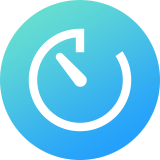
Outpatient Treatment That Takes Less of a Toll
Treatment takes about 15 minutes, and you will need to rest for about 30 minutes afterwards. You can go home in about 60 minutes.
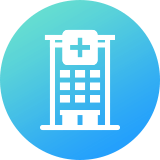
No Need for Continued Hospital Visits or Rehabilitation
Because no continued hospital visits or rehabilitation is necessary after treatment, it’s easy even for those who come from far away to return to their daily lives and work.
How Treatment Is Done and Treatable Conditions
-

- Disc herniation causing inflammation of the compressed nerve.
-

- A hollow is made in the nucleus pulposus inside the intervertebral disc by cauterizing it with a laser.
-

- The protruding intervertebral disc is caused to shrink, and pressure on the nerves is reduced.
Efficacy of the Method for Disc Herniation
The PLDD method is effective for herniated discs with especially high internal pressure that have not prolapsed from the ligaments and have mild to moderate herniation. In cases of prolapse or separation, Discseel® Procedure will be an effective treatment method.
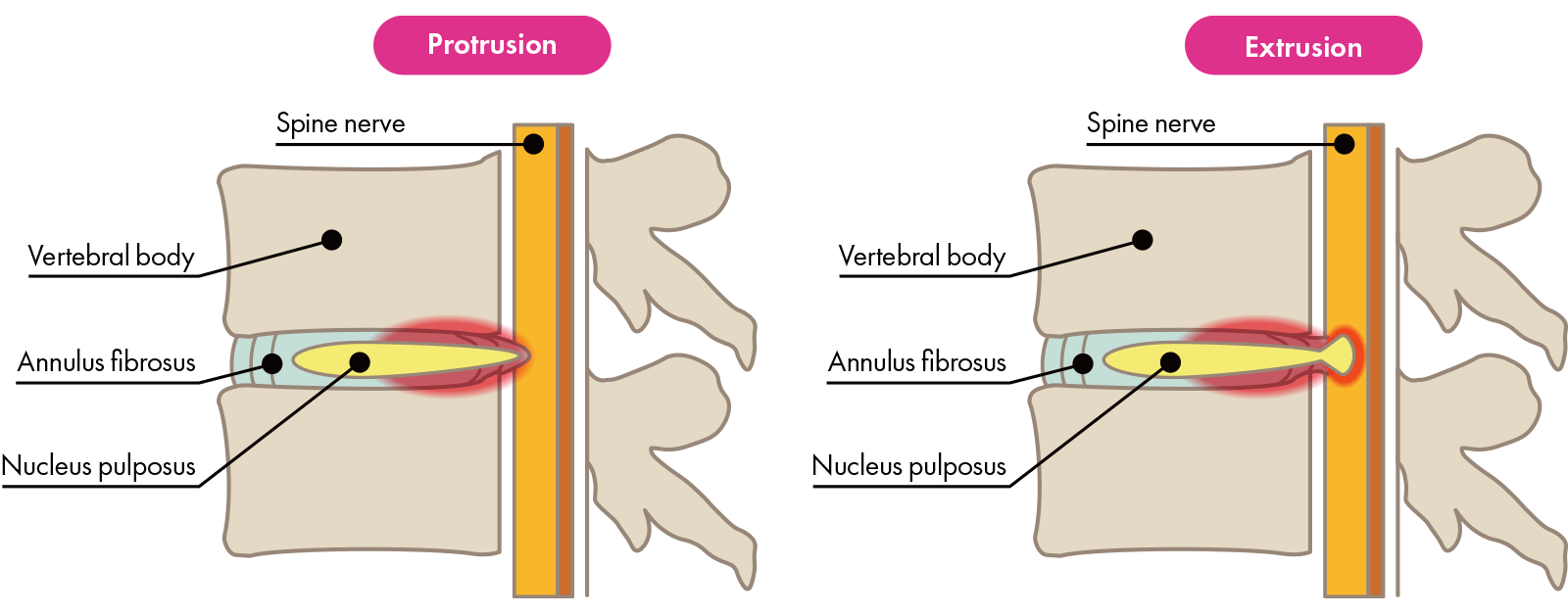
Flow of the PLDD method from examination to returning home
The PLDD treatment is performed on an outpatient basis, so patients can return home on the day of the operation.
- After taking an MRI and X-rays, the patient is examined and diagnosed.
- Local anesthesia is administered and the treatment is completed in about 15 minutes.
- After the treatment, the patient has to rest in the recovery room for about 1 to 2 hours.
- The patient is examined and given a post-treatment explanation by a physician before being discharged.

Treatment Time
- Treatment
Time - approx. 15 minutes
You will need to rest for about 30 minutes after treatment, and you will need about 60 minutes until you can go home. Light activity can be done the following day, but you will need to postpone sports or heavy labor for around 7 days.
Post-Treatment Issues
About Post-Treatment Issues
The recurrence rate is said to be equally as high as with conventional surgery. That is because intervertebral disc damage cannot be improved as with Discseel® Procedure
About Side Effects
After being treated with the PLDD method, you may experience some unprecedented back pain, numbness, or muscle tension in your thighs. These symptoms are temporary and may subsist from one week to one month after surgery, depending on the symptoms and condition of the patient. Although the probability is much lower than with surgical procedures, there is a risk of infection or complications in the treated area. At our clinic, the doctor will explain the treatment in detail in order to reduce these risks as much as possible. Please contact us with any questions or concerns you may have before treatment.
Physical Activity Guidelines After the Treatment
Since treatment is performed on an outpatient basis, patients can return to their daily life from the very next day after undergoing the procedure and are encouraged to walk and exercise as possible. However, it is advisable to temporarily refrain from the following exercises and daily activities.
| Exercises and daily life activities that can be done after the treatment |
Period of restriction |
|---|---|
| Disposable body warmer | Same day |
| Cycling | 1 day |
| Sauna | 3 days |
| Bathing | 3 days |
| Pool Walking | 3 days |
| Going to the gym | 7 days |
| Massage | 7 days |
| Nerve block procedure | 7 days |
| Rehabilitation | 7 days |
| Yoga | 14 days |
| Chiropractic adjustment | 14 days |
| Sportbike riding | 14 days |
| Acupuncture | 14 days |
| Golf | 30 days |
* We recommend that you wait for at least 30 days before taking a golf round.
Treatment Costs for the PLDD Treatment
| Disc | 1 disc | 2 discs | 3 discs | 4 discs |
|---|---|---|---|---|
| Cost of Treatment | 308,000(JPY) | 363,000(JPY) | 418,000(JPY) | 473,000(JPY) |
Notes
*Consultation, diagnosis, MRI and other tests are all included in the treatment costs listed above.
*Since the treatment is not covered by the Japanese health insurance, the patient must bear the entire cost of the treatment.
*We accept payments by credit card and cash in Japanese Yen (JPY).
*All taxes included.
The PLDD Method: FAQ
-
- Q
-
Is the PLDD method covered by the Japanese national health insurance?
- A
-
No, this procedure is not covered by the national health insurance. If you have a life insurance, you may be eligible. Please feel free to contact our staff for more information.
-
- Q
-
Isn't there a risk that the laser in the PLDD procedure cuts my intervertebral disc?
- A
-
The laser beam is applied to a very limited area and will not sever the disc in any way.
-
- Q
-
Can the PLDD method be used in association with The Discseel® Procedure and other treatments?
- A
-
Our clinic does not provide combined treatment. The PLDD method is based on the principle that the volume inside the intervertebral disc is reduced by cauterizing it with a laser, causing the herniated part to retract inside. On the other hand, The Discseel® Procedure has a different therapeutic purpose as its function is to repair and regenerate the disc. In any case, we will first perform a diagnosis of your current physical condition.
-
- Q
-
Is it still possible to receive treatment if I have had a surgical procedure performed on a disc in the past?
- A
-
If the diagnosis established that you are eligible, then treatment is possible. Please visit our clinic first.
-
- Q
-
Is rehabilitation necessary after treatment by the PLDD method?
- A
-
We recommend walking or light stretching after the treatment. Even if the PLDD method prevents the hernia from leaking, muscle stiffness and decline in muscle strength may cause an inflammatory reaction that can lead to a recurrence of the condition. Please make sure to exercise appropriately for prevention and to avoid recurrence.
Treatment Overview
The Discseel
Discseel® Procedure
Discseel® Procedure was developed by an American surgeon by the name of Dr. Kevin Pauza, after caring for hundreds of patients who were made worse following their spine surgery. The treatment aims to seal tears in herniated vertebral discs and help them regenerate and recover their, allowing permanent relief of back pain. Dr. Pauza holds a series of 16 patents for a device and Discseel® biologic that support the treatment. Dr.Nonaka has been licensed to perform the Discseel® Procedure in 2018, and more than 2,880 patient have undergone the treatment in our clinic since then. At present, approximately 20 doctors, including physicians from Harvard and Boston Universities are using the Discseel® Procedure to treat their patients in the USA. Dr. Nonaka is the first physician trained to perform the Discseel® Procedure in Japan.

-
The PLOT Method
(Laser And Ozone)Percutaneous Laser and Ozone Treatment

-
The PODT Method
(Ozone)Percutaneous Ozone Disc
Treatment
-
The PLDD Method
(Laser)Percutaneous Laser Disc
Decompression
Targeted Conditions
-
Disc Herniation

-
Spinal Canal Stenosis

-
Sciatica

-
Spondylolisthesis

-
Disc Degeneration

-
Lumbar Spondylosis

- HOME/
- Treatment Overview/
- The PLDD Method (Laser)



